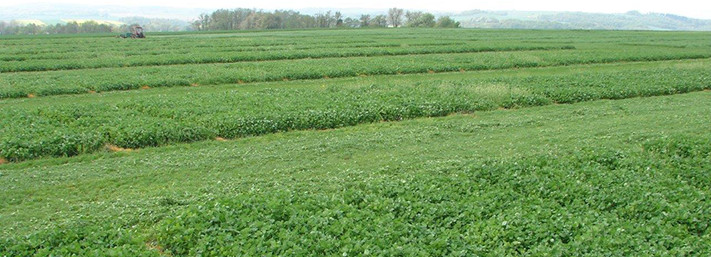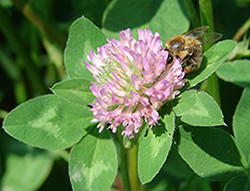Breeder's Corner - red clover
What can you expect from our future red clover varieties? We asked our plant breeder, Libor Jalûvka, to explain the progress of our red clover development programme that takes place at our breeding station in the Czech Republic.
09/01/2017

Red clover (Trifolium pratense L) is the most useful perennial legume cultivated in central and northern Europe. Red clover is tolerant of shallow, acid and wet soils, and it performs very well when grown in partnership with grasses.
As a result, farmers are growing more red clover. In sustainable grassland systems, red clover raises drymatter yields and improves forage quality without the need for added nitrogen. The one factor that hampers wider use in permanent grassland is red clovers relatively short longevity, a feature that is closely related to disease resistance.
Farmers traditionally harvest red clover based stands three times a year. Change is coming as animal performance continues to rise, and climate change extends the growing season. In some parts of Europe, it is common to see four and sometimes five cuts a year.
DLF breeding programme
 Our breeding programme has six goals. They are:
Our breeding programme has six goals. They are:
- To increase persistence, which is equivalent to increasing disease resistance
- To increase dry-matter yield
- To improve resistance to diseases such as Anthracnose, Sclerotinia and Fusarium
- To improve compatibility with grasses in seed mixtures
- To develop later-flowering varieties
- To reduce protein degradation
Registered varieties
Our work in the Czech Republic has produced seven varieties that are now registered in various countries.
They are:
- CALLISTO: high and stable, dry-matter yield
- GANYMED: quick spring growth with a high yield at the first cut
- METIS: high persistency
- SUEZ: winter hardiness with a high protein content
- VESNA: earliest variety 4n
- AMOS: produces a higher yield in the second harvest year
- NODULA: high N fixation
We also have another 11 candidates undergoing official trials. They are all diploid types with varying degrees of earliness and a range of growth rhythms. We focus on diploid varieties because that is where we find the best opportunities for combining high yield with persistency and stable seed production.
Click here to read more about our red clover varieties.
Find a ForageMax® mixture containing red clover.
(Use the filter by ticking off 'Red clover' on the left side of the page).
